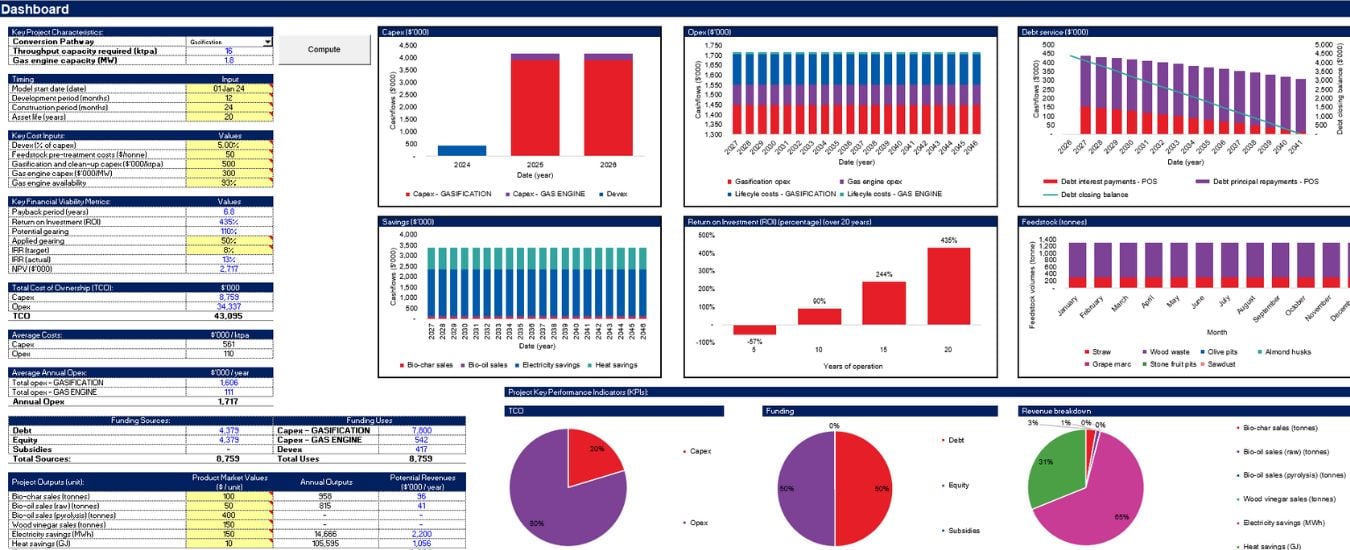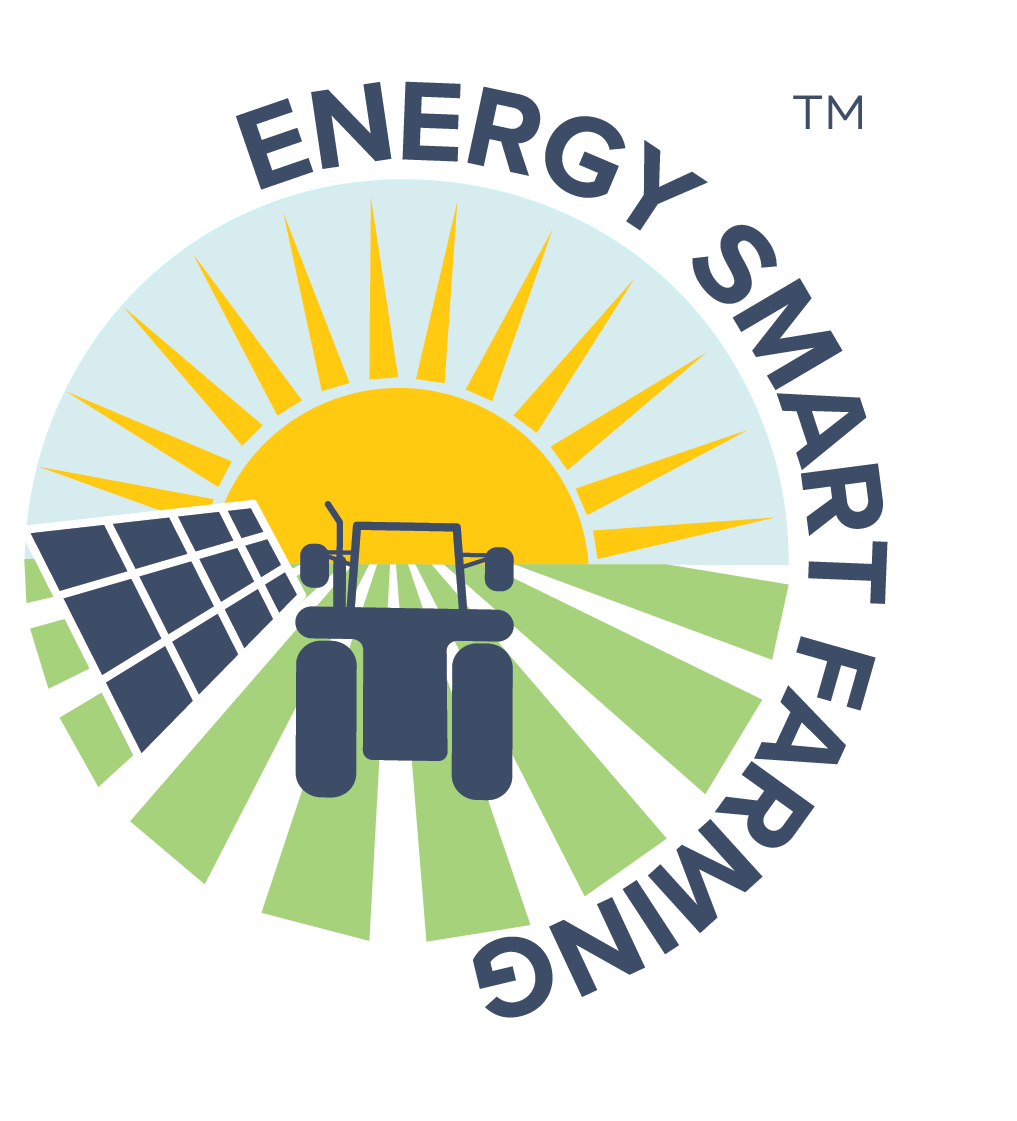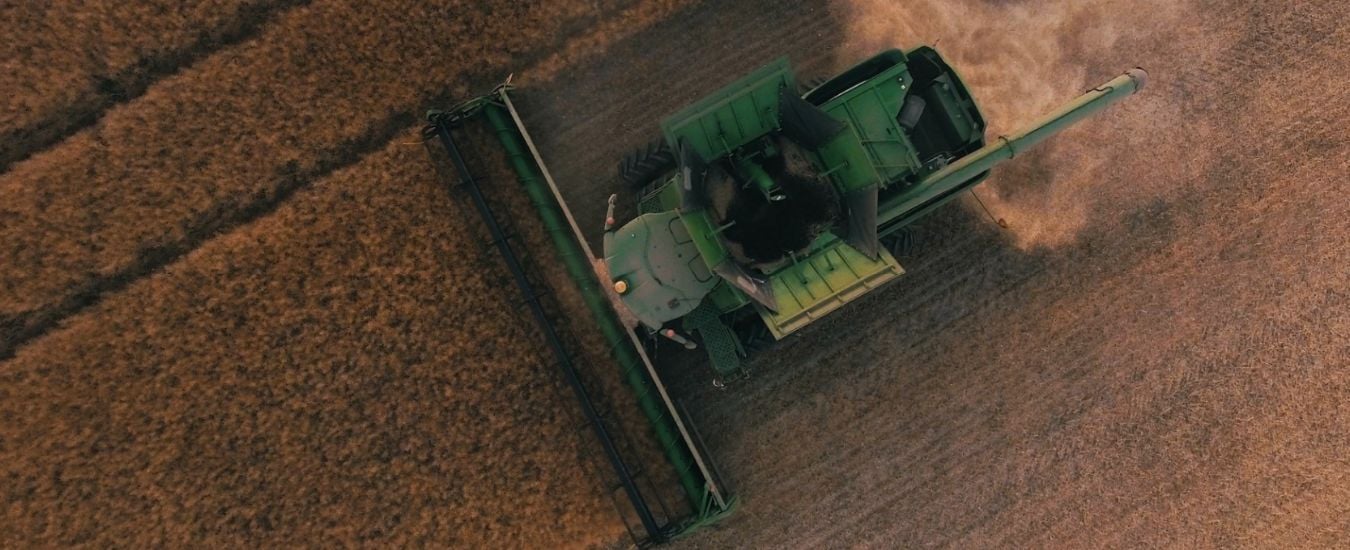Agriculture Victoria has produced an Advanced Thermal Treatment for Agricultural Residues (ATTAR) financial assessment tool and Advanced Thermal Treatment of Agricultural Residues report, a comprehensive report that outlines the commercial and financial implications of investing in the thermal processes of gasification or pyrolysis technology for residues on-farm.
The ATTAR report provides details on how gasification and pyrolysis work in an agricultural context. It explains the types of commercially available gasification and pyrolysis systems and feedstock requirements. It states equipment capacities and efficiencies (yields), capital and operating costs, and the value of marketable products and for technologies available globally and within Australia.
The ATTAR financial assessment tool has been developed to assist users to assess the commercial viability of utilising gasification or pyrolysis technology on-farm by utilising different feedstocks as an input and calculating the expected equipment size required, costs, potential benefits, and commercial returns.
The tool will help inform decision making through scenario analysis on the commercial viability of on farm pyrolysis or gasification technology and form part of a larger assessment process into the benefits and risks of a proposed project.
- It is an easy-to-use tool with a dashboard to understand the economic viability of using agricultural residues like straw, horticultural residues or woody biomass for on-farm and farm system energy use.
- The tool allows you to calculate the commercial case (return on investment, payback period) for investing in gasification and pyrolysis on-farm.
- The tool allows you to input operational parameters which then produce a scenario-based breakdown of the costs and benefits of advanced thermal treatment operations.

Screenshot of the Advanced Thermal Treatment for Agricultural Residues financial assessment tool
On-farm gasification and pyrolysis allow crop stubble, woody biomass, and other residues to be converted into syngas, biochar, bio-oil, or wood vinegar, unlocking numerous applications.
This not only helps minimise the environmental ‘footprint’ of your farm but also offers a sustainable source of energy (including heat and electricity) and soil enhancement.
By harnessing thermal processes, you can unlock a dual benefit – efficient waste management and enhanced revenue streams. This technology is a pathway so that residues can become a valuable asset. From improved soil fertility to renewable energy production, advanced thermal treatment is at the forefront of sustainable agriculture into the future.
Farmers stand to gain a dual benefit from embracing advanced thermal treatment technology for agricultural residues.
To learn more about the dual benefits of waste reduction and resource creation on-farm, read the ATTAR report and complete the ATTAR financial assessment tool.



